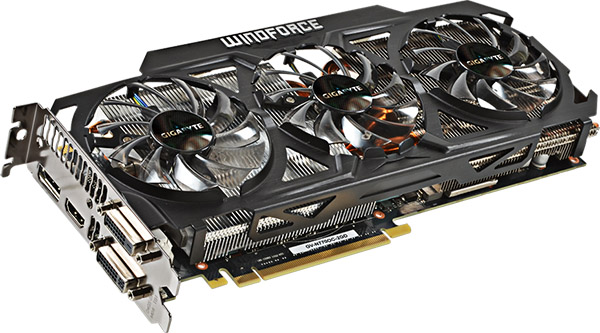The GeForce GTX 770 Review: Calling In A Hit On Radeon HD 7970?
Wait, the new GeForce GTX 770 is powered by Nvidia's old GK104? That's right. And guess what? The card is faster, quieter, more feature-complete, and less expensive than the GeForce GTX 680 that came before it. Can it usurp the compelling Radeon HD 7970?
A Little Glimpse Into The Business Of Graphics Cards
The GeForce GTX 770s on our test bench bear the same industrial design as the GeForce GTX 780 and Titan, yes. And today’s review is representative of other 770s based on that configuration. But don’t think for a minute that all 770s are going to look like ours. As you might imagine, the vapor chamber heat sink, aluminum shroud, PC window, and backlit logo are expensive (we hear the thermal solution alone costs between $50 and $60).
So, Nvidia’s partners are eager to save that expense, use their own coolers, and perhaps do a little overclocking to optimize the margin and value of the cards they sell.
Gigabyte sent over a GV-N770OC-2GD to our SoCal lab, armed with the company’s own Windforce 3X thermal solution rated for 450 W. Gigabyte’s design is a departure from Nvidia’s in almost every way. It’s wide-open, so all of its waste heat exhausts into your chassis. Also, it employs three axial fans rather than one centrifugal blower. Finally, the large two-sided sink is connected by a pair of 8 mm and four 6 mm heat pipes.
The PCB Gigabyte uses is ½” shorter than Nvidia’s, while its cooler is ½” longer, so the total board length is 11” instead of 10.5”. The GV-N770OC-2GD employs an eight-phase power circuit though, while Nvidia’s reference design is based on a five-phase design.
As a result of its beefy cooler and robust power delivery, Gigabyte ships this specific model with a 1,137 MHz base clock (up from Nvidia’s 1,046 MHz) and a GPU Boost rating of 1,189 MHz (up from 1,085 MHz). Memory data rates don’t change, but we’re already dealing with the fastest modules ever shipped on a graphics card.
While it’s true that I’m not a proponent of coolers that dump GPU heat back into your case, Gigabyte does achieve great acoustic performance under heavy load using clock rates quite a bit higher than reference. A properly-configured chassis shouldn’t have too much trouble coping with the thermal output, though two of these things in SLI will present more of a challenge. If Gigabyte manages to bring this overclocked board to market at a price close to $400, then you can expect a healthy performance boost attributable to the company’s built-up Windforce 3X design with little compromise elsewhere.
We'll go into more depth on this card and two other add-in board partner products toward the end of today's review, including GPU Boost scaling, thermal, acoustic, and 3D performance, thanks to the hard work of our Tom's Hardware team in Germany. But bear in mind that if you specifically want Nvidia’s reference cooler, you probably shouldn't drag your feet shopping for a board equipped with it. Board partners not already prepared with an alternative to Nvidia's design are looking for more cost-effective solutions. For as much as we like the all-metal dual-slot design, we don’t expect it to last very long on GeForce GTX 770.
Get Tom's Hardware's best news and in-depth reviews, straight to your inbox.
Current page: A Little Glimpse Into The Business Of Graphics Cards
Prev Page Can A One-Year-Old GPU Still Excite Us? Next Page Test Setup And Benchmarks
